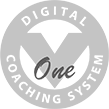Tee Time Management: Optimizing Profitability

By Bradley Turner, Keiser University College of Golf Executive Director – MBA, PGA
Most golfers like the idea of showing up to their golf course of choice with no other golfers in sight as they head to the first tee. The typical golfer wants to enjoy a day on the golf course without concern about other players disrupting their golf experience. An empty tee sheet is a beautiful thing from the perspective of the passionate golfer. On the other hand, golf course owners and operators want to see a tee sheet full of golfers. A cornerstone of effective golf operations includes efficient tee time management. Tee times dictate the flow of players on the course, impacting revenue, customer satisfaction, and overall operational efficiency. With the right strategies in place, golf facilities can optimize profitability while enhancing the experience for players. This article focuses on the intricacies of tee time management, exploring key strategies and best practices to maximize revenue and streamline operations.
Understanding Tee Time Management
Effective tee time management involves balancing demand with available resources, such as the number of tee times available for golfers throughout the year. Since golf is dependent on daylight, the course capacity of potential golfers changes from week to week. Additional factors influencing tee time dynamics include the weather conditions, golfer demographics, and course popularity. By analyzing these variables, golf operators can make data-driven decisions to optimize tee time distribution and revenue generation.
Technology and Tee Time Management
In today’s digital age, technology plays an important role in tee time management. Advanced booking systems and online platforms enable golfers to reserve tee times remotely, providing convenience and flexibility. Integrating technology allows operators to implement dynamic pricing strategies based on demand fluctuations and market trends. Additionally, data analytics tools can offer insights into booking patterns, helping operators fine-tune their tee time allocation strategies for maximum profitability.
Strategic Pricing Models
Effective pricing strategies are paramount in maximizing revenue from tee-time bookings. Golf operators can employ various pricing models, including time-based pricing, demand-based pricing, and membership tiers. Dynamic pricing strategies adjust tee time price points based on market demand. By implementing strategic pricing models, operators can capture value from different customer segments while minimizing revenue loss due to underutilized tee slots.
Optimizing Course Utilization
Maximizing course utilization is the essential benefit of successful tee time management. Optimizing course utilization will lead to a profitable golf operation. Balancing tee time intervals to maintain a steady flow of players throughout the day is crucial. Strategic scheduling ensures efficient use of resources while minimizing player congestion and wait times. Moreover, implementing staggered tee time starts and utilizing course marshals can help streamline player traffic and enhance the overall golfing experience.
Customer Experience Enhancement
At the end of the day, a successful tee time management strategy will lead to an improved customer experience. Delivering an exceptional customer experience is key to fostering loyalty and repeat customers. Beyond efficient tee time management, factors such as course maintenance, amenities, and customer service contribute to overall satisfaction. Personalized service and attention to detail can elevate the golfing experience, prompting positive reviews and referrals. Engaging with customers through feedback mechanisms allows operators to address concerns promptly and continuously improve service quality.
Effective tee time management is essential for optimizing profitability and enhancing operational efficiency in golf operations. By leveraging technology, implementing strategic pricing models, optimizing course utilization, and prioritizing customer experience, operators can unlock new levels of success in the competitive golf industry. Moreover, diversifying revenue streams and adapting to evolving market trends can future-proof golf facilities against economic uncertainties. With a strategic approach to tee time management, golf operators can drive sustainable growth and profitability while delivering memorable experiences for players.
Learn more!
Want more tips? If you want to take your game to the next level, contact our team at Keiser University’s College of Golf & Sport Management today. With our dedication and experience, we can elevate your game to new heights together. Give us a call today at 888-355-4465.














